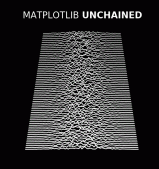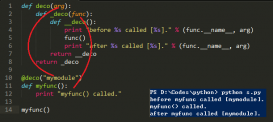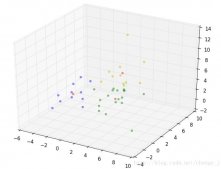主要内容:对比新旧函数,用于过滤原始图像中轮廓分析后较小的区域,留下较大区域。
关键字:connectedComponentsWithStats
在以前,常用的方法是”是先调用 cv::findContours() 函数(传入cv::RETR_CCOMP 标志),随后在得到的连通区域上循环调用 cv::drawContours() “
比如,我在GOCVHelper中这样进行了实现
|
1
2
3
4
5
6
7
8
9
10
11
12
13
14
15
16
17
18
19
20
21
22
23
24
25
26
27
28
29
30
31
32
33
|
//寻找最大的轮廓 VP FindBigestContour(Mat src){ int imax = 0; //代表最大轮廓的序号 int imaxcontour = -1; //代表最大轮廓的大小 std::vector<std::vector<Point>>contours; findContours(src,contours,CV_RETR_LIST,CV_CHAIN_APPROX_SIMPLE); for (int i=0;i<contours.size();i++){ int itmp = contourArea(contours[i]);//这里采用的是轮廓大小 if (imaxcontour < itmp ){ imax = i; imaxcontour = itmp; } } return contours[imax]; } //寻找并绘制出彩色联通区域 vector<VP> connection2(Mat src,Mat& draw){ draw = Mat::zeros(src.rows,src.cols,CV_8UC3); vector<VP>contours; findContours(src.clone(),contours,CV_RETR_LIST,CV_CHAIN_APPROX_SIMPLE); //由于给大的区域着色会覆盖小的区域,所以首先进行排序操作 //冒泡排序,由小到大排序 VP vptmp; for(int i=1;i<contours.size();i++){ for(int j=contours.size()-1;j>=i;j--){ if (contourArea(contours[j]) < contourArea(contours[j-1])) { vptmp = contours[j-1]; contours[j-1] = contours[j]; contours[j] = vptmp; } } } |
在OpenCV3中有了新的专门的函数 cv::connectedComponents() 和函数 cv::connectedComponentsWithStats()
定义:
|
1
2
3
4
5
6
7
8
9
10
11
12
13
14
15
16
17
18
|
int cv::connectedComponents ( cv::InputArrayn image, // input 8-bit single-channel (binary) cv::OutputArray labels, // output label map int connectivity = 8, // 4- or 8-connected components int ltype = CV_32S // Output label type (CV_32S or CV_16U) );int cv::connectedComponentsWithStats ( cv::InputArrayn image, // input 8-bit single-channel (binary) cv::OutputArray labels, // output label map cv::OutputArray stats, // Nx5 matrix (CV_32S) of statistics: // [x0, y0, width0, height0, area0; // ... ; x(N-1), y(N-1), width(N-1), // height(N-1), area(N-1)] cv::OutputArray centroids, // Nx2 CV_64F matrix of centroids: // [ cx0, cy0; ... ; cx(N-1), cy(N-1)] int connectivity = 8, // 4- or 8-connected components int ltype = CV_32S // Output label type (CV_32S or CV_16U) ); |
其中,新出现的参数
stats:长这样

分别对应各个轮廓的x,y,width,height和面积。注意0的区域标识的是background
而centroids则对应的是中心点
而label则对应于表示是当前像素是第几个轮廓
例子:
对于图像

|
1
2
3
4
5
6
7
8
9
10
11
12
13
14
15
16
17
18
19
20
21
22
23
24
25
26
27
|
Mat img = cv::imread( "e:/sandbox/rect.png",0); cv::Mat img_edge, labels, img_color, stats,centroids; cv::threshold(img, img_edge, 128, 255, cv::THRESH_BINARY); bitwise_not(img_edge,img_edge); cv::imshow("Image after threshold", img_edge); int i, nccomps = cv::connectedComponentsWithStats ( img_edge, labels, stats, centroids ); cout << "Total Connected Components Detected: " << nccomps << endl; vector<cv::Vec3b> colors(nccomps+1); colors[0] = Vec3b(0,0,0); // background pixels remain black. for( i = 1; i < nccomps; i++ ) { colors[i] = Vec3b(rand()%256, rand()%256, rand()%256); if( stats.at<int>(i, cv::CC_STAT_AREA) < 200 ) colors[i] = Vec3b(0,0,0); // small regions are painted with black too. } img_color = Mat::zeros(img.size(), CV_8UC3); for( int y = 0; y < img_color.rows; y++ ) for( int x = 0; x < img_color.cols; x++ ) { int label = labels.at<int>(y, x); CV_Assert(0 <= label && label <= nccomps); img_color.at<cv::Vec3b>(y, x) = colors[label]; } cv::imshow("Labeled map", img_color); cv::waitKey(); |
注意:
1、对于OpenCV来说,白色代表有数据,黑色代表没有数据,所以图像输入之前要转换成”黑底白图“
2、看labels 和 stats,其中第1 2 6 个的面积小于200

而labels中

完全对的上号,结果为

以上这篇浅谈OpenCV中的新函数connectedComponentsWithStats用法就是小编分享给大家的全部内容了,希望能给大家一个参考,也希望大家多多支持服务器之家。
原文链接:https://www.cnblogs.com/jsxyhelu/p/7439655.html












